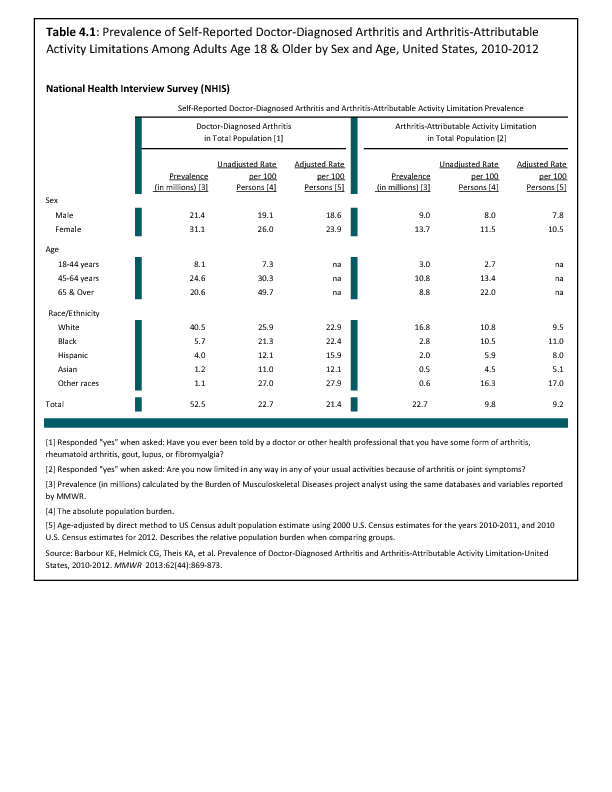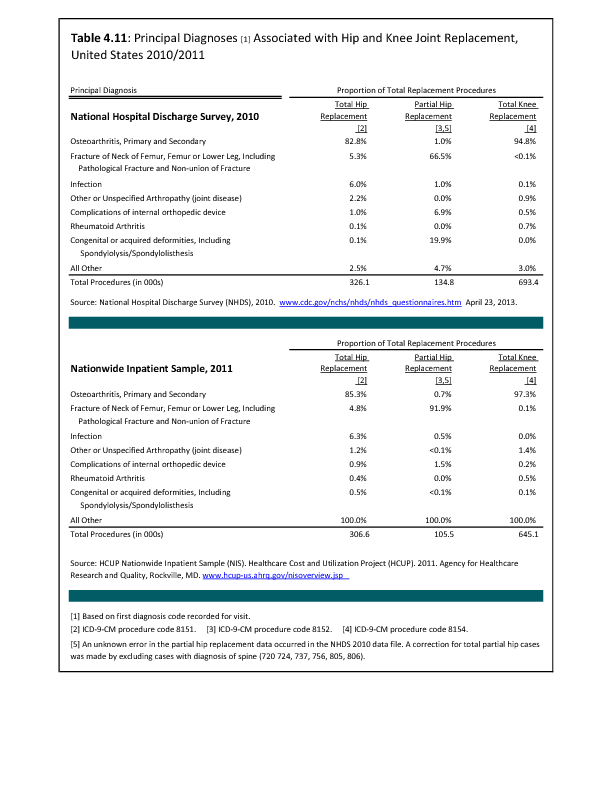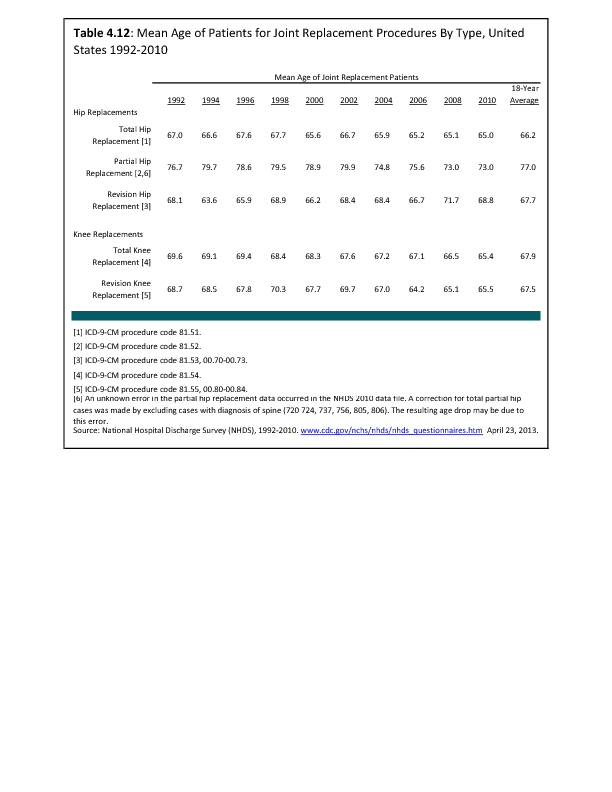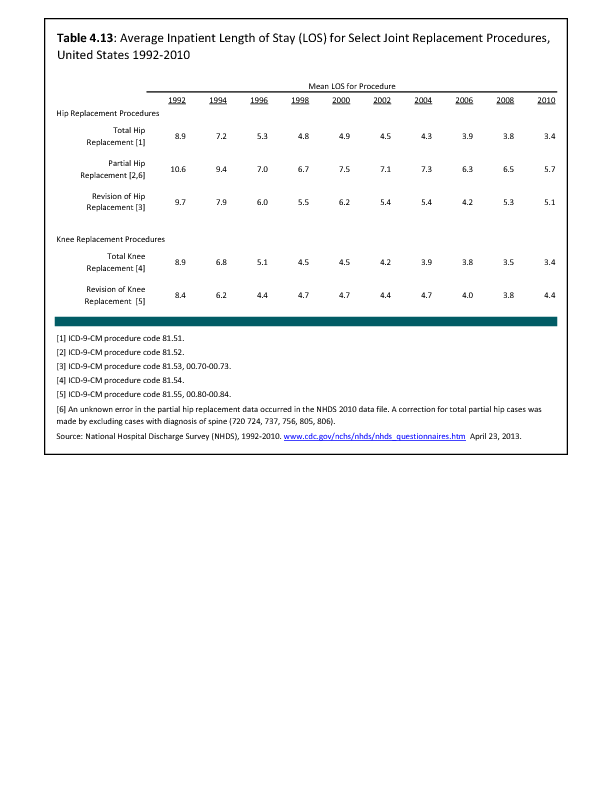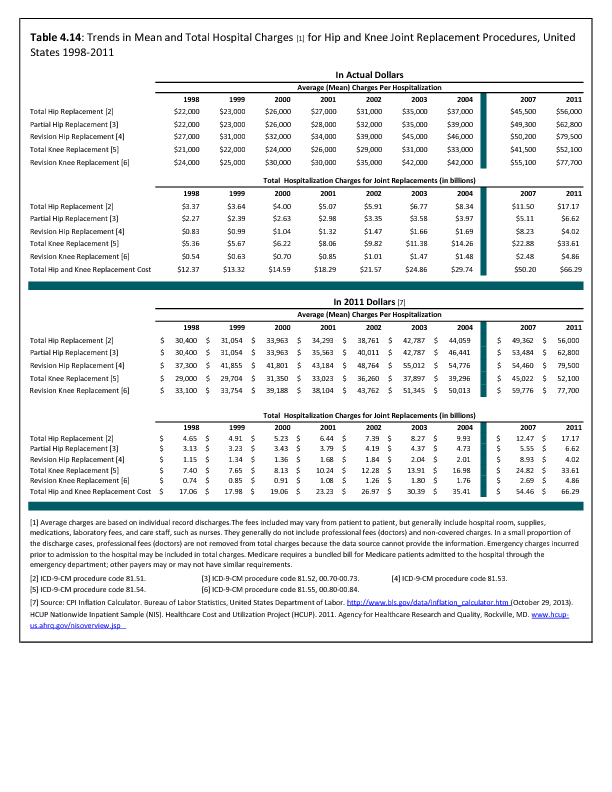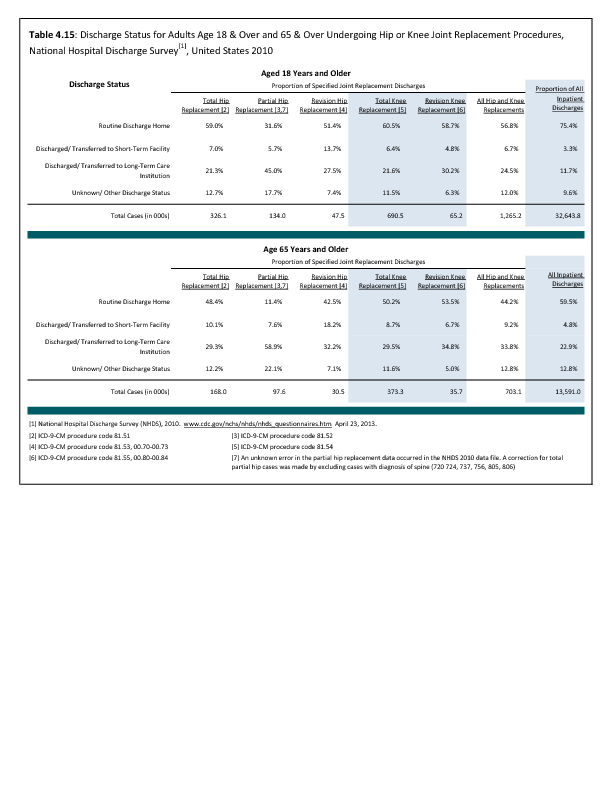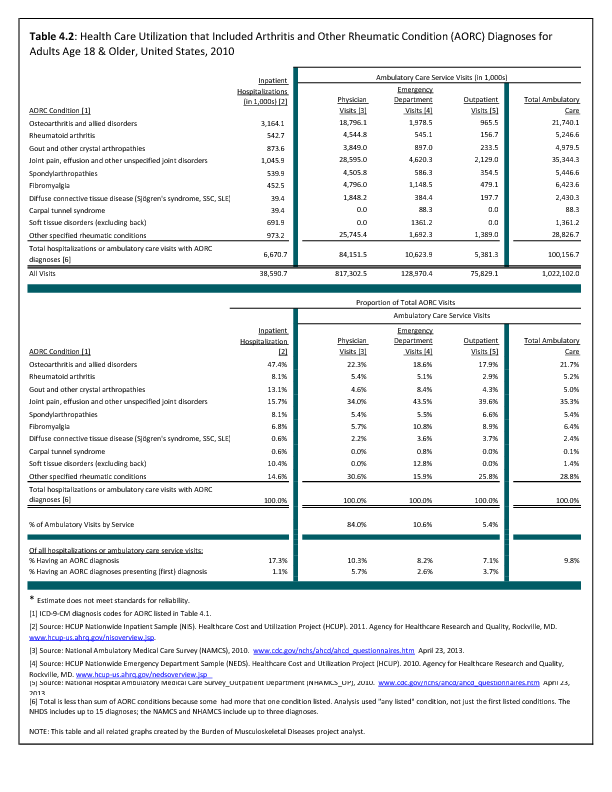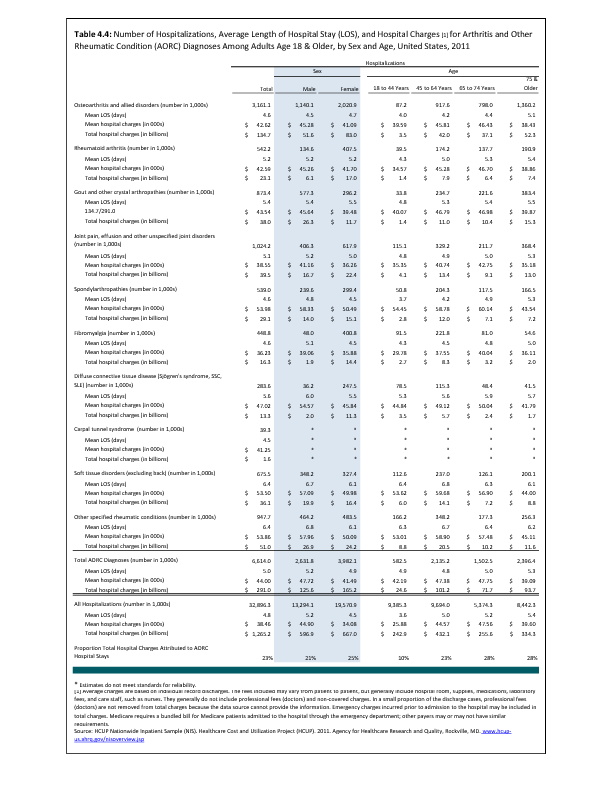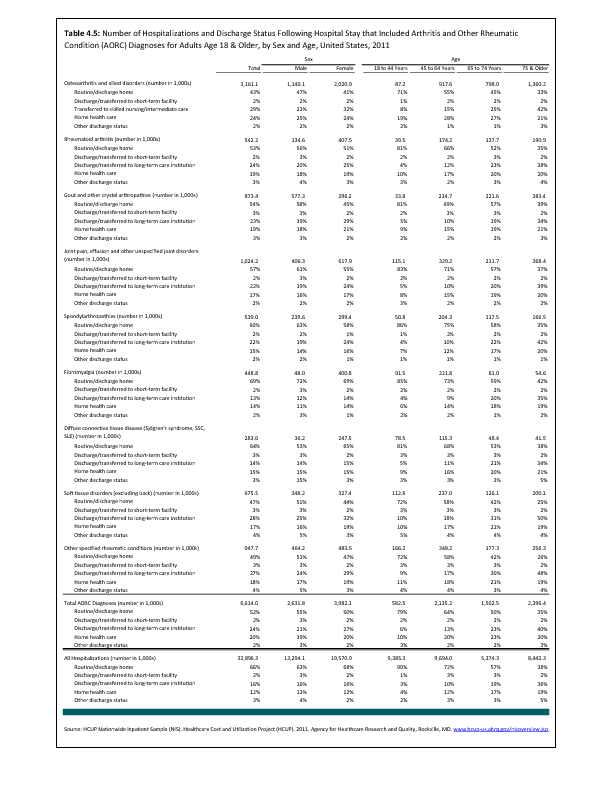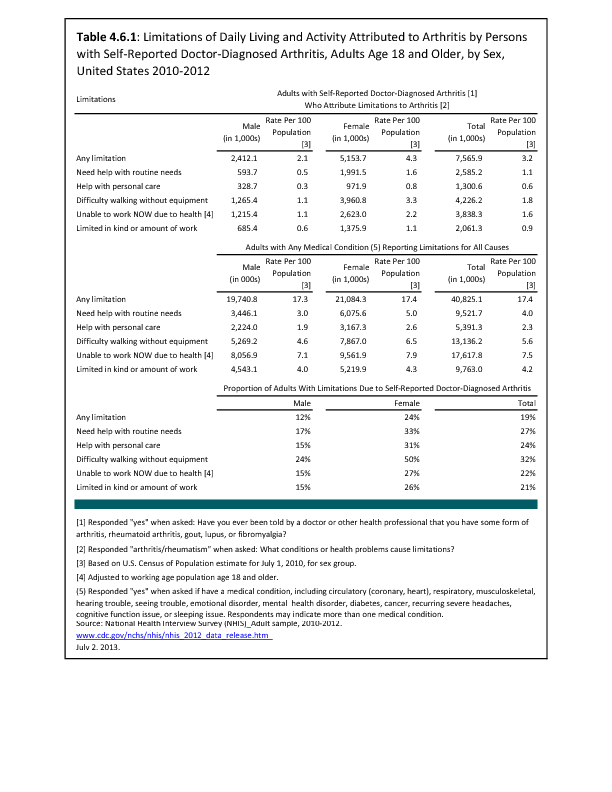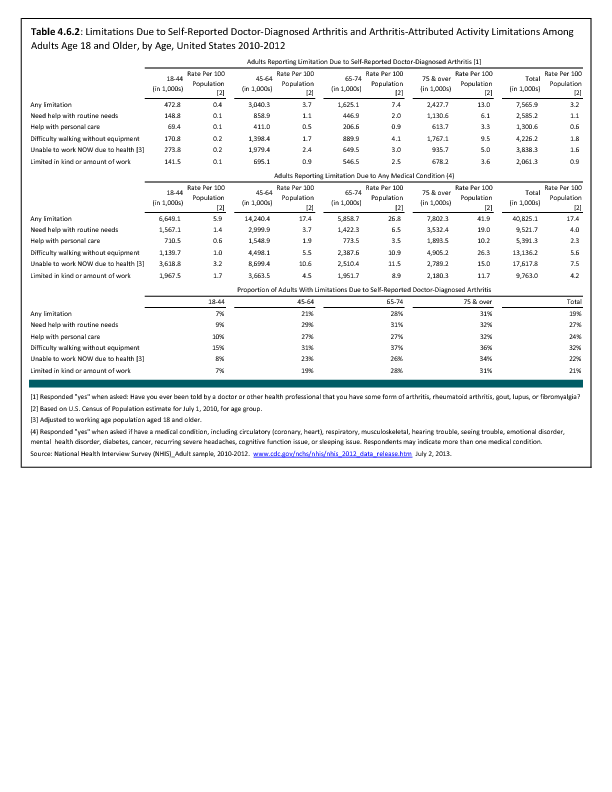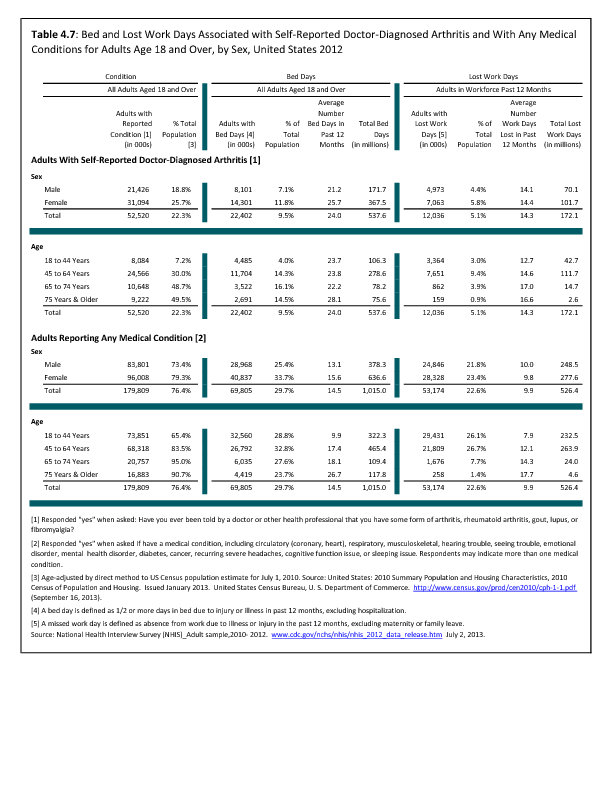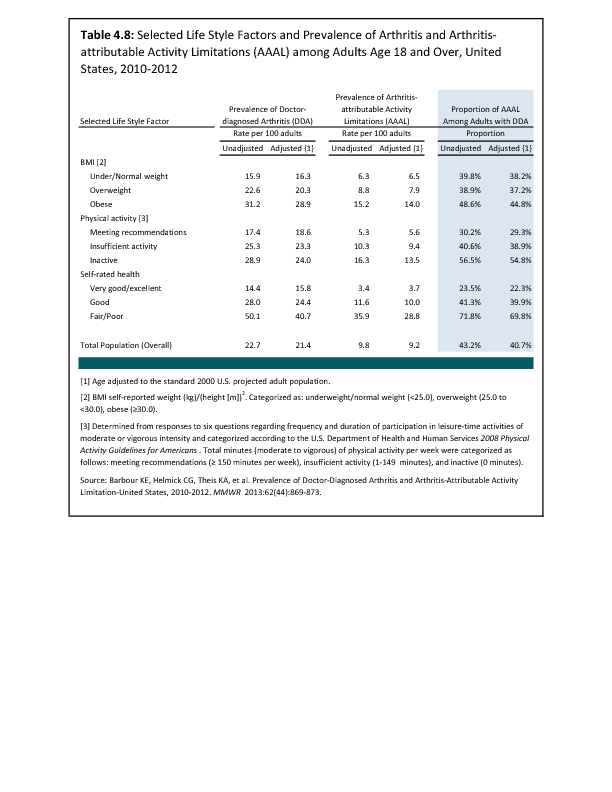Because many types of arthritis have a higher prevalence among older adults, expectations are that the current aging of the population will increase the prevalence and impact of AORC unless new means to lessen that impact are discovered in the near future. Projections of arthritis impact among adults are based on 2003 data adjusted for age distribution in the US population, but not for other potentially important factors such as the obesity epidemic and the possible increasing frequency of joint injuries.1 Doctor-diagnosed arthritis among adults is occurring as projected, with 52.5 million in 2010 to 2012 and 67 million expected by 2030. Arthritis-attributable activity limitations among adults appear to be occurring at a faster pace than previously projected. This suggests the projected 25 million in 2030 will also be exceeded.1 Previous costs of arthritis have been driven by age-related increases in prevalence.2 Future costs of arthritis are likely to be driven higher by the same age-related increase in prevalence, but also from the increasing frequency of surgical interventions.
- 1. a. b. Hootman JM. Helmick CG: Projections of US prevalence of arthritis and associated activity limitations. Arthritis Rheum 2006;54(1):226-229.
- 2. Cisternas MG, Murphy L, Yelin E, Foreman AJ, Pasta DJ, Helmick CG: Trends in medical care expenditures of adults with arthritis and other rheumatic conditions: 1997 to 2005. J Rheum 2009;36:2531-2538.
Edition:
- 2014

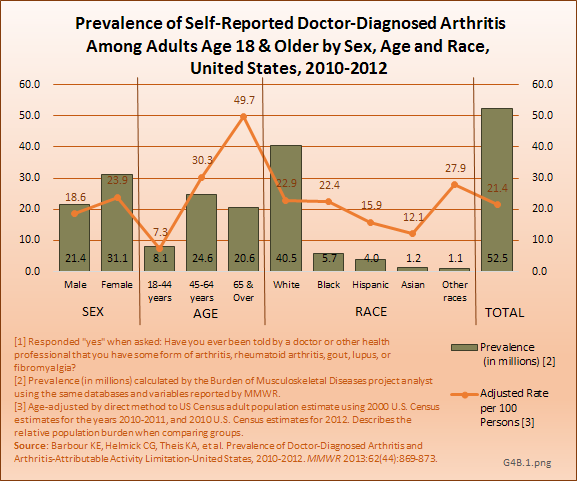
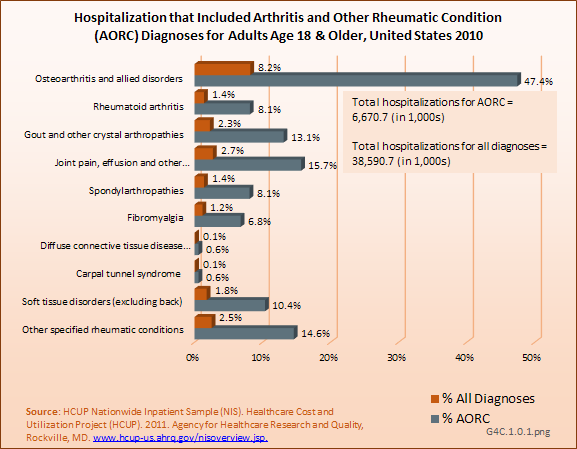
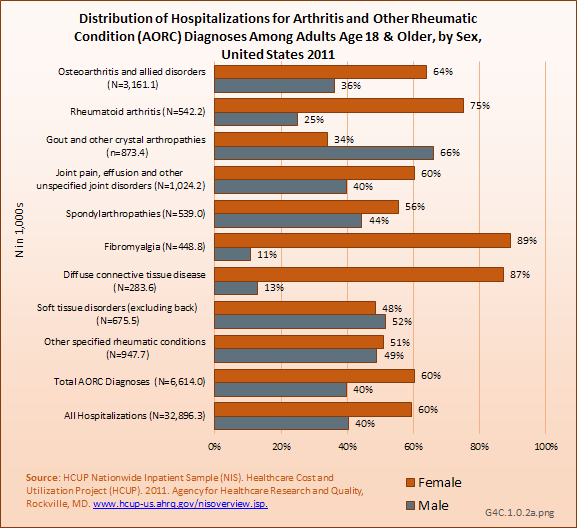
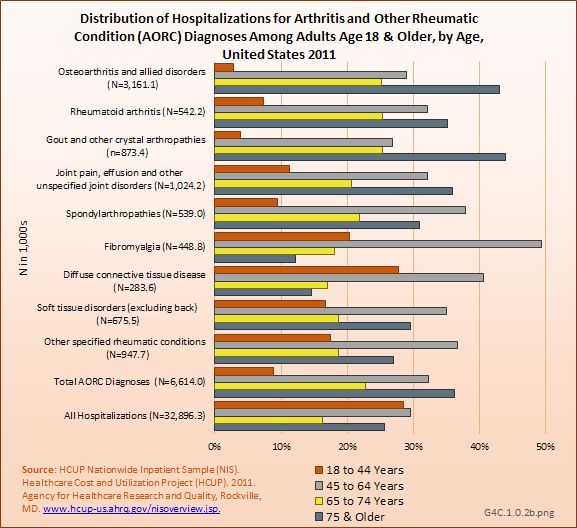
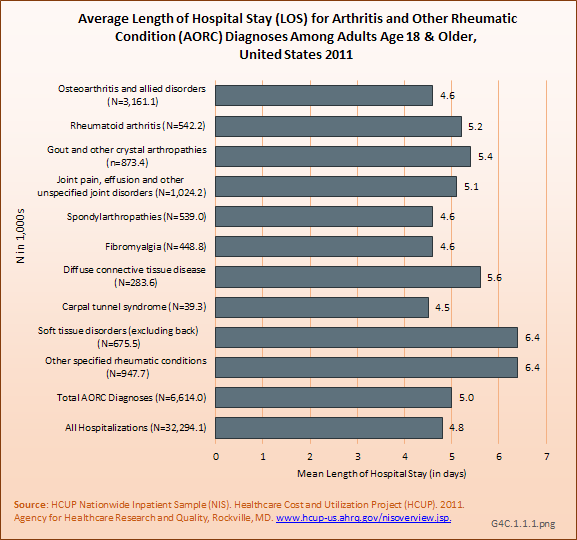
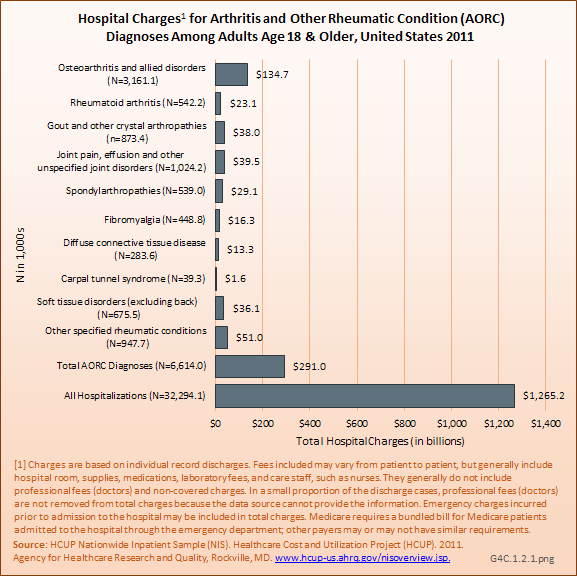
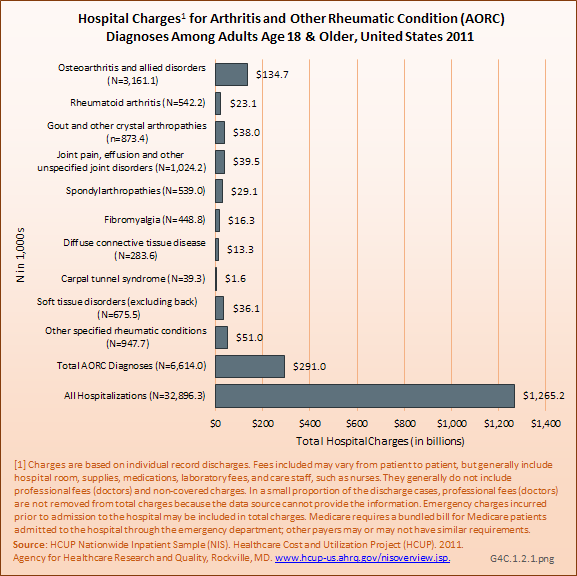
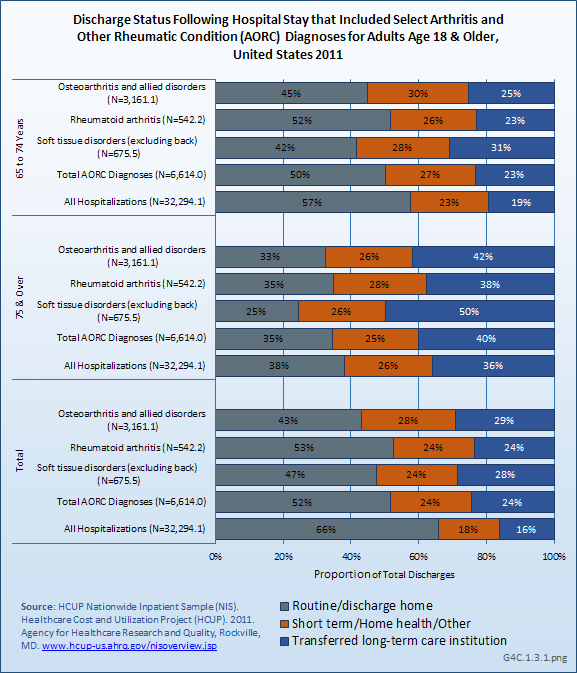
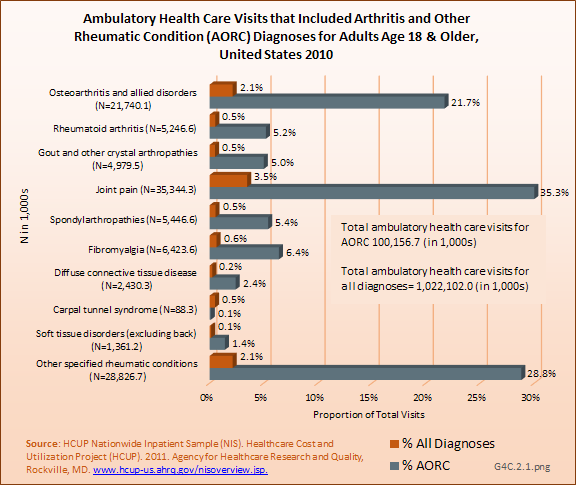
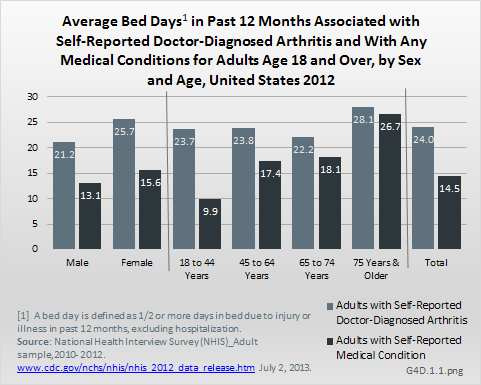
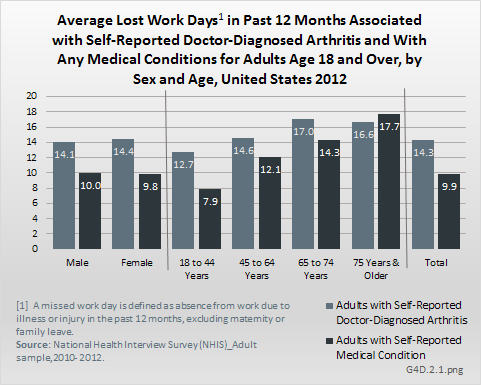
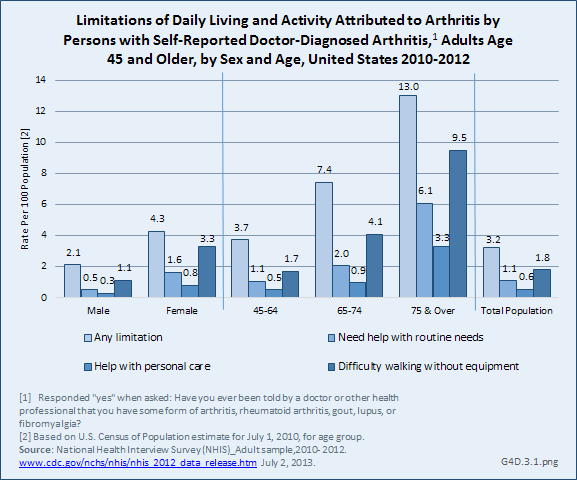
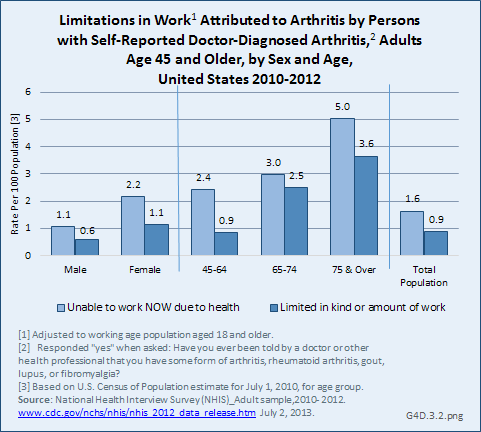
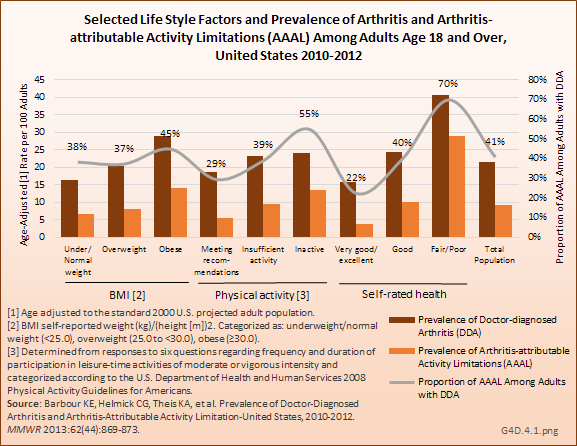

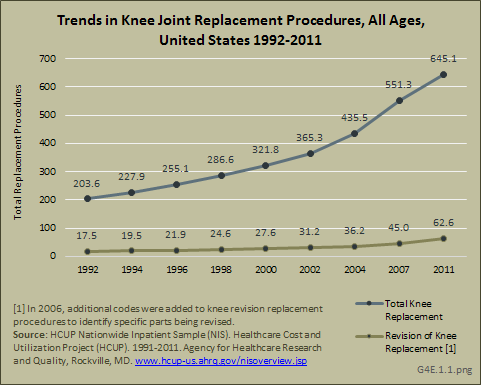
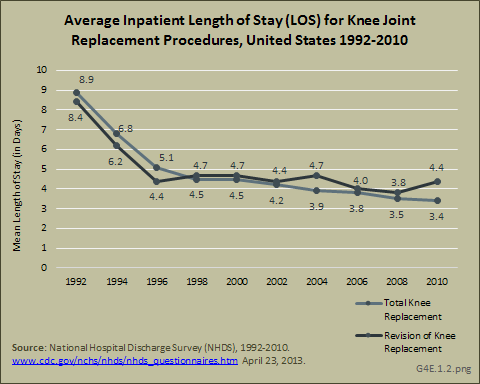
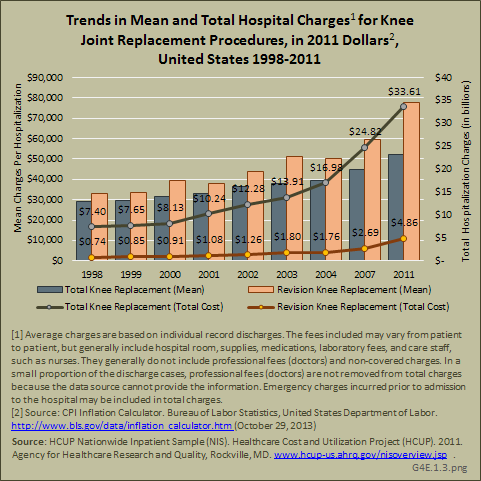

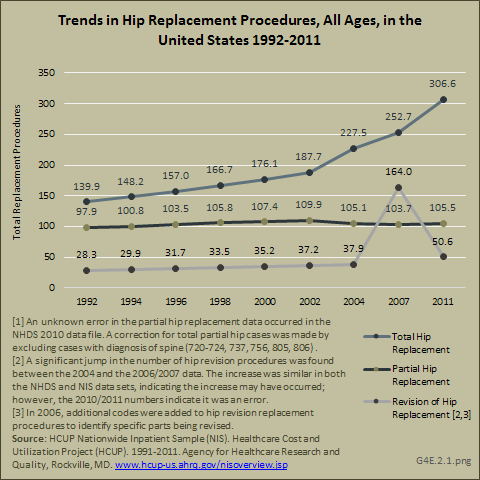
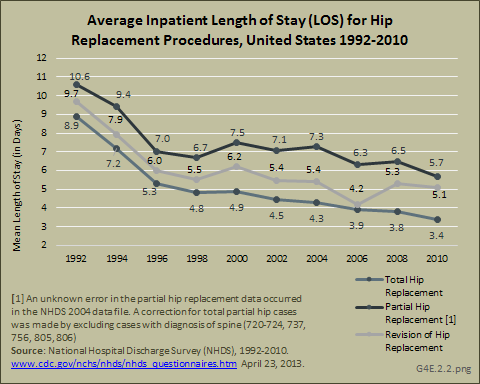

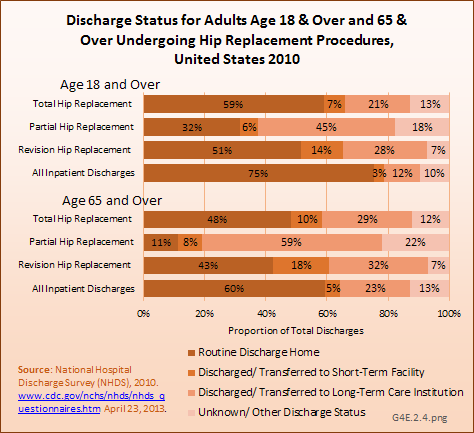
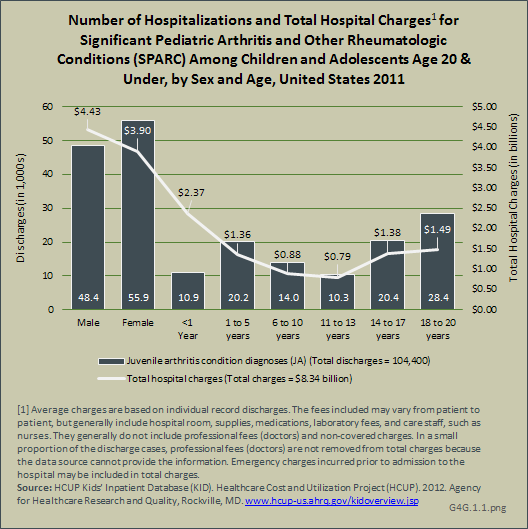
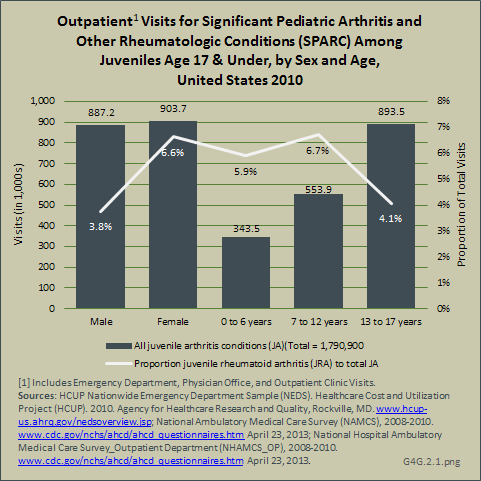
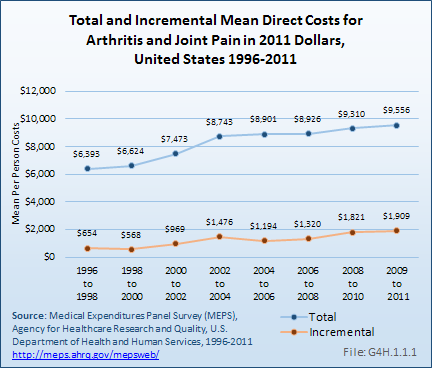
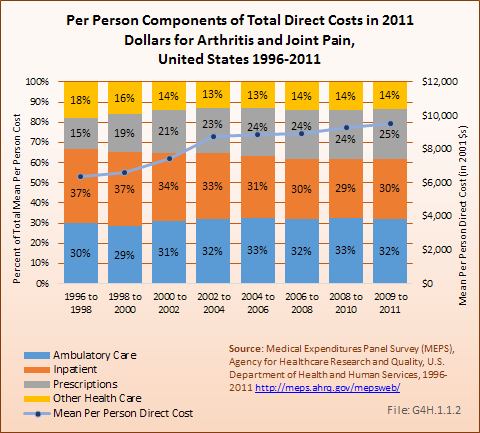
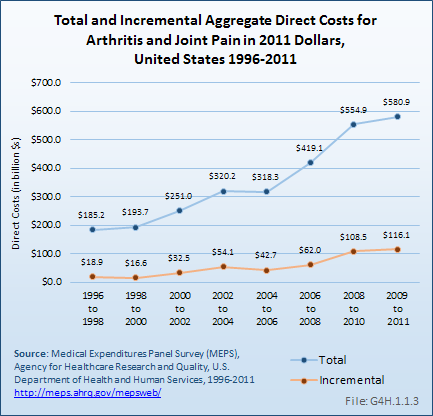
 Download as CSV
Download as CSV